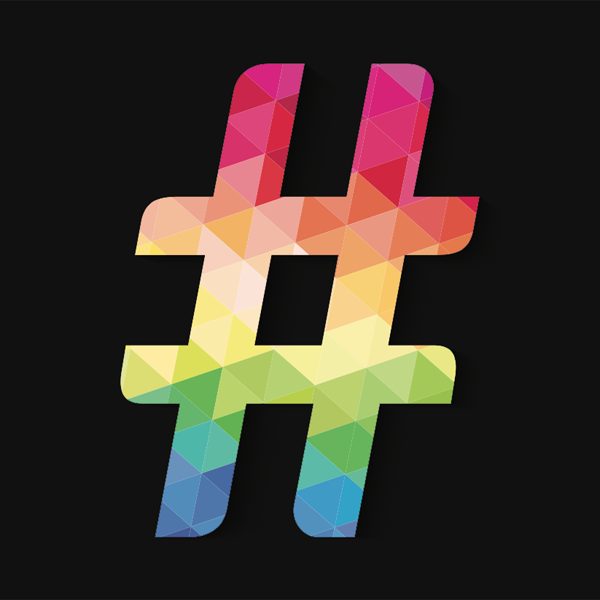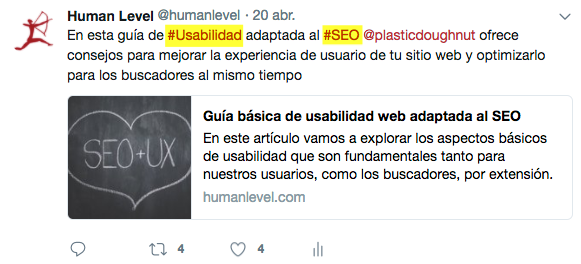Written by Fernando Maciá
Index
 A hashtag is a tag consisting of one or more words written without spaces or punctuation marks, preceded by the # symbol (called hash mark ). The hashtag serves mainly to tag and categorize content that may belong to the same event, occurrence, product, television program, area, sector, etc. or, in short, any subject or idea that we can think of. It can be used, therefore, to give greater diffusion to such contents or to increase the participation and involvement of users with a certain topic.
A hashtag is a tag consisting of one or more words written without spaces or punctuation marks, preceded by the # symbol (called hash mark ). The hashtag serves mainly to tag and categorize content that may belong to the same event, occurrence, product, television program, area, sector, etc. or, in short, any subject or idea that we can think of. It can be used, therefore, to give greater diffusion to such contents or to increase the participation and involvement of users with a certain topic.
Its use was introduced with the arrival of Twitter to our lives, and given its popularity and acceptance among Internet users, over the years it was extended to other social networks more widely used around the world, including Instagram, Facebook or LinkedIn. Hashtags can often become trending topics when many people agree on their use.
Today the hashtag is a very prominent tool in our culture and our way of communicating, and it has a very close relationship with online marketing, particularly in its aspect focused on social media. Hashtags are also a good way to make ourselves known to a very specific segment of our target audience, allowing us to reach an audience very interested in a certain topic that has not yet heard of us.
Throughout all these years we have been observing the evolution of the use of hashtags for all kinds of purposes and purposes, with greater or lesser success, in a more or less adequate way… Although everything is relative depending on our own objective, the truth is that there are good and bad ways to use them that are quite universal. Let’s take a look at some of them:
Good practices
- Witty and catchyhashtags. If the relationship we have with our audience is rather informal (or we focus on a younger audience), having a little “spark” will be great for us, contributing to its success and viralization. Use puns, catch phrases and popular expressions that are in line with your business or personal brand.
- Hashtags that touch on an emotional level. Bet on hashtags that motivate, that excite, that make your audience identify with them… A good example that transcended worldwide could be #JeSuisCharlie, which went viral after the attack on the premises of the French magazine Charlie Hebdo in Paris in 2015. Other inspiring examples include #BlackLivesMatter, an international movement driven by the relentless systemic violence towards people of color, and #MeToo, to give voice to people who have been victims of sexual harassment and violence.
- Collaborative hashtags. Especially those that encourage sharing experiences, experiences, and even personal aspects of our daily lives. Something as simple as the hashtag #NowPlaying or #NP, to tag a piece of music that we are enjoying at that moment and want to share with the entire network, is one of the most loved and used by Internet users. Or, the self-explanatory hashtag #Postureo, which a few years ago lived its glorious era, and today continues to be quite relevant.
- Short and simple hashtags. It is not for nothing that large companies, events, social movements and others use hashtags with a rather reduced length. For example: #Grammys, #Euro2016, #15M, #GameOfThrones, #NoFilter, #StarWars, #MWC2018…. They are easy to remember and quick to type ✓.
- Own Hashtags. If you have a brand, and creativity and vision to spare, try creating your own hashtags with the potential to trend, but without including your name. An interesting example is the Instagram account of the official portal of Tourism in Spain. Its hashtag #VisitSpain is very popular among travelers who visit Spain and document their trip on this social network, with images of the most emblematic places, as well as curiosities and life in general in our country. Another well-known example is the McDonalds slogan “I’m lovin’ it” turned into the #Imlovinit to suit the current times.
- Be specific. Sometimes it can be complicated, but in addition to trying to be as concise as possible, we must be very specific at the same time, avoiding double meanings (the latter, in fact, can have catastrophic effects). By being more specific, we also focus on a very well-defined audience, which, as a general rule, tends to enhance interaction with our audience.
Bad practices
- Hashtags that are too long. If we want to increase participation and engagement betting on hashtags that are long is not going to do us a great favor. People tend to be lazy by nature, and if we make our users write too much, it is likely that most of them will choose not to, plain and simple. In addition, long hashtags are much more difficult to memorize, and this aspect also works against us.
- Too many hashtags concentrated in a single post. Although at the platform level there is no limitation as such in the number of hashtags that we can include, the social networks themselves, such as Twitter, recommend not to use more than two per post. Perhaps we could stretch it to three in certain cases, but more than that would be excessive, as it would make reading more difficult and saturate the user. It is also true that depending on the social network in which we find ourselves, this limit can be increased. For example, on Instagram we could include up to 5 hashtags, as long as they are relevant to the published content.
- Hashtags that are not relevant to the published content. Needless to say, you should never use hashtags that have little or nothing to do with the content of your post, just because a certain topic is trending at the moment. It is in very bad taste. Engaging in this type of unethical behavior is the equivalent of spamming. It interrupts the conversation of users who are interested in sharing their opinion about something specific.
- It is not enough to use any word to turn it into a hashtag. Don’t use hashtags randomly on any word, as it is unlikely that someone will search for #Backpack #Wall or #RechargeableBatteries, to give an example. This recommendation is related to not exceeding the number of hashtags included in a single post.
- Don’t use your brand name as a hashtag. If users want to interact with your brand, they can do so through @ mentions, for example, @humanlevel. Repeating it with a #HumanLevel hashtag is redundant.
Location in the publication
Hashtags do not have to be at the beginning or end of a publication like conventional tags, as they can be easily and naturally integrated into the wording of the tweet or post, as in the example below:
If we find it necessary to add some more at the end, for example, to focus on several topics simultaneously, there would be no problem, as long as we follow, as far as possible, the recommendation of not including more than 2 or 3 hashtags per post, or the commonly agreed limit according to each social network.
To sum up…
It is important that you are clear about the target audience you are going to focus your social media strategy on. Depending on that, you will also have to decide how you will use your hashtags.
References
- How to use hashtags, in the help section of Twitter
- How to use hashtags, on the Hootsuite Blog
- Image: Vector Art by Vecteezy!
